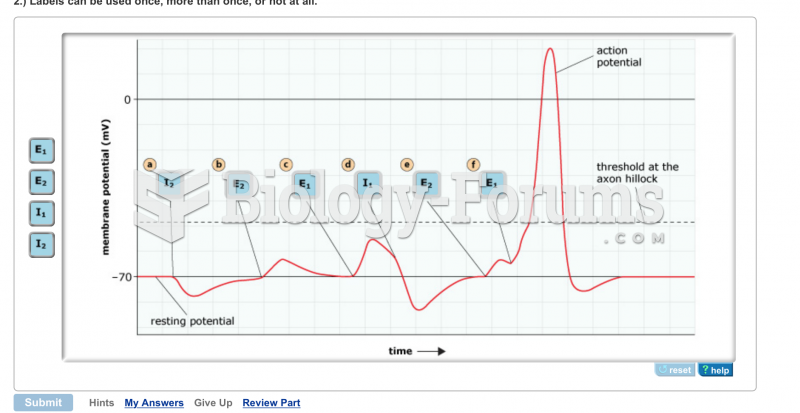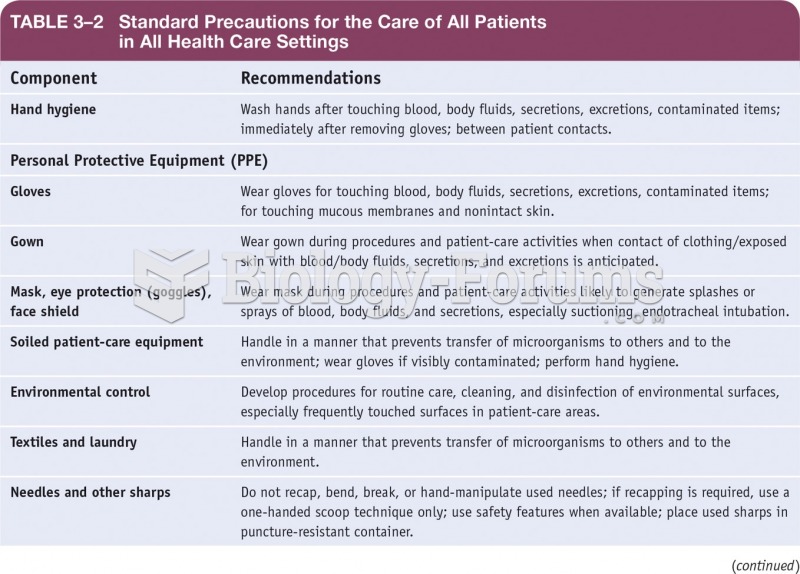|
|
|
The first monoclonal antibodies were made exclusively from mouse cells. Some are now fully human, which means they are likely to be safer and may be more effective than older monoclonal antibodies.
Looking at the sun may not only cause headache and distort your vision temporarily, but it can also cause permanent eye damage. Any exposure to sunlight adds to the cumulative effects of ultraviolet (UV) radiation on your eyes. UV exposure has been linked to eye disorders such as macular degeneration, solar retinitis, and corneal dystrophies.
Vaccines prevent between 2.5 and 4 million deaths every year.
Egg cells are about the size of a grain of sand. They are formed inside of a female's ovaries before she is even born.
In the United States, there is a birth every 8 seconds, according to the U.S. Census Bureau's Population Clock.







